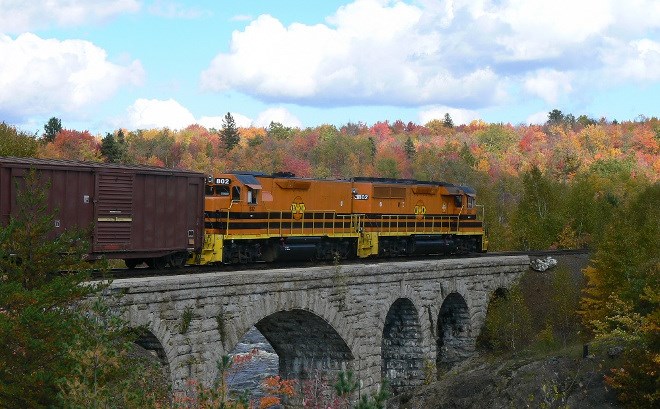Supporters behind preserving northeastern Ontario short-line rail service beyond 2018 are meeting for a big-tent strategy session in Sault Ste. Marie at the end of July.
Sault councillor Steve Butland said industrial shippers, community and Indigenous leaders from the Algoma and Sudbury districts, along with management from the Huron Central Railway, will gather on July 25 to devise a plan and pitch on approaching Queen’s Park for a subsidy to keep rail freight moving between the Sault and Sudbury.
Genesee & Wyoming Canada, the Huron Central’s parent company, announced in May that it intends to discontinue operations on the 173-mile (278 kilometres) line at year’s end, citing financial difficulties with needed track maintenance and federally-mandated safety upgrades.
The railroad wants $43.2-million subsidy, which would be split evenly between the federal and provincial governments.
Butland and the city expects new premier Doug Ford to make good on his campaign promise to fund the railway’s track program with money from the Northern Ontario Heritage Fund (NOHFC).
“With the premier saying, ‘yes we support this,’ it’s pretty hard for him to go back on this. He made all sorts of commitments for Northern Ontario.”
The line serves Essar Steel Algoma in the Sault, the Domtar pulp mill in Espanola, and the EACOM sawmill in Nairn Centre.
The loss of the railroad would be devastating to a single-mill town like Espanola and would jeopardize the viability of the forest products industry in the region. For a Sault, it would remove one of two Class 1 railways for the steelmaker.
Butland and Joe Fratesi, the city’s retired chief administrative officer, are the municipality’s point men on this file.
It’s familiar ground for both men.
In 2009, Fratesi was primarily instrumental in working with the province and the federal government in putting together $33-million track aid package when the Huron Central threatened a closure within 30 days. That funding pool has since dried up.
Depending on how the Sault meeting goes, Butland said they’re proposing to send a delegation to the Association of Municipalities of Ontario (AMO) conference in Ottawa in August to lobby on the railway’s behalf.
The annual AMO conference is a once-a-year gathering where municipal leaders get scheduled face-time with provincial cabinet ministers.
Butland said they’ve requested a meeting with new Energy, Northern Development and Mines Minister Greg Rickford, who holds the purse strings of the Heritage Fund.
“Hopefully we’ll have everything in order at that time, and we’ll have the stakeholders there to make our final push.”
Earlier this year, the railway’s funding application to tap into the National Trade Corridor Fund was rejected by Transport Canada because it didn’t have matching dollars secured first from the province.
A Ministry of Northern Development and Mines spokesman told Northern Ontario Business before the provincial election that Genesee & Wyoming had not even filed a funding application with NOHFC.
If provincial funding can be secured, Butland said he received assurance from Sault MP Terry Sheehan that the railway can apply again to the trade corridor fund.
“I’m pretty optimistic things are going well.”
Canadian Pacific Railway (CP) owns the track but contracts out the operation to Genesee & Wyoming Canada, the Montreal-based parent company of the Huron Central.
Though CP pools the freight (mostly steel and forest products) coming off the Huron Central onto its transcontinental line at Sudbury, the responsibilities to maintain the track and bridges are delegated to the short-line operator.
In his conversations with the railway, Butland said there’ve been some “positive developments” with CP indicating it’s becoming more directly involved in the situation through some form of a partnership arrangement with Genesee & Wyoming.
Whether that would mean some private investment by CP for the tracks, he couldn’t say.
Moreover, Butland said the short-line operator told him that this would be the last time they ask for a government subsidy, that after the next five years the line would be economically sustainable.
Genesee & Wyoming did not divulge their future business plans to him.
“So, this is a ten-year plan as opposed to a five-year plan,” said Butland. “It’s not a public promise (by the railway), but we will be pursuing that on July 25.”
Butland hopes Huron Central management remain true to their word, acknowledging that communities like the Sault can’t periodically be threatened with rail service withdrawal with a huge ask for millions of dollars.
Currently, there is no transportation infrastructure funding pool to assist short-line railroads in Ontario, who fall under the jurisdiction of the provincial government.




